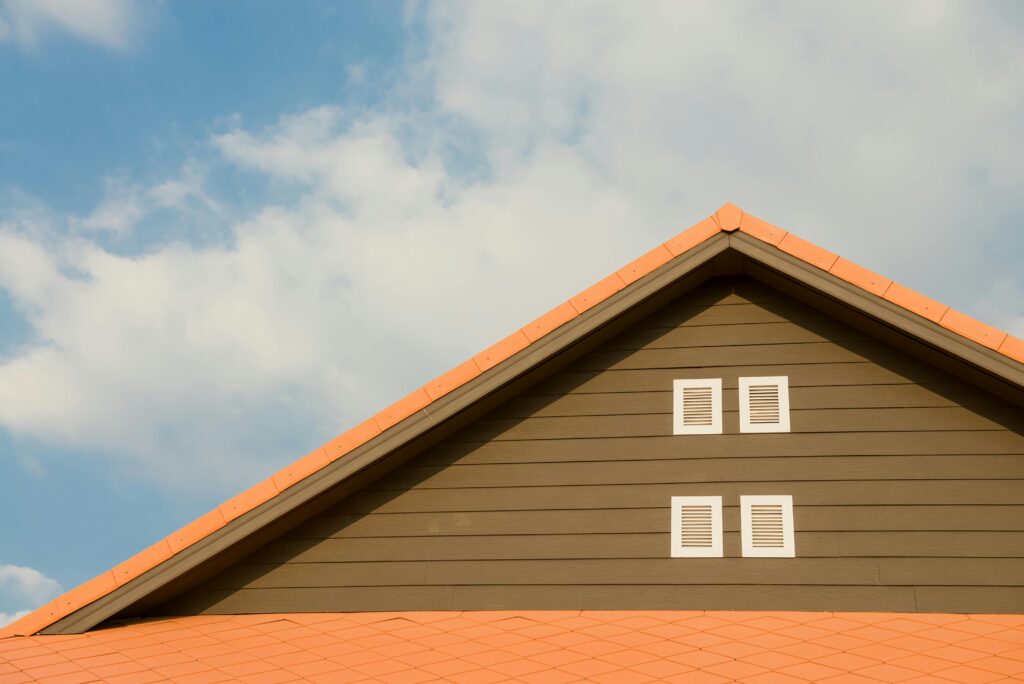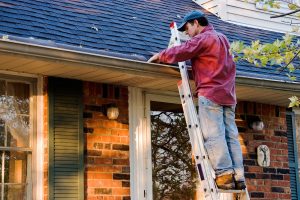Hail Damage vs. Normal Wear and Tear: How to Tell the Difference on Your Crofton, Maryland Roof
As a homeowner your Crofton Maryland roof is your home’s primary protector against the elements. From scorching summer sun to icy winter winds, and especially the unpredictable thunderstorms that roll through our region, your roof takes a beating. Over time, this constant exposure leads to what we call “normal wear and tear.” However, sometimes your roof faces more sudden and severe challenges, like hail.
Distinguishing between normal wear and tear and hail damage is crucial. Not only does it impact the longevity and integrity of your roof, but it also has significant implications for your homeowner’s insurance claim. At Columbia Roofing, we understand the unique challenges Crofton homeowners face, and we’re here to help you understand the subtle (and sometimes not-so-subtle) differences.
Understanding Normal Wear and Tear on Your Crofton Roof
Every roof has a lifespan. As it ages, natural degradation occurs due to continuous exposure to sunlight, temperature fluctuations, rain, wind, and even airborne pollutants. This process is known as normal wear and tear. Here are some common signs:
- Granule Loss: Asphalt shingles are coated with ceramic granules that protect the asphalt from UV rays and provide color. Over time, these granules naturally erode and wash away. You might see them accumulate in your gutters or at the bottom of your downspouts. While some granule loss is normal, excessive loss can expose the asphalt to harmful UV radiation, accelerating deterioration.
- Cracking and Blistering: As shingles age, they can become brittle. Exposure to heat and cold cycles can cause them to crack, especially around fasteners. Blistering, which looks like small bubbles, occurs when moisture or gases trapped within the shingle expand.
- Curling and Cupping: Shingles can begin to curl (lift at the edges) or cup (become concave in the middle) due to age, temperature changes, and moisture absorption. This reduces their ability to shed water effectively.
- Algae and Moss Growth: In the humid climate of Crofton, algae (black streaks) and moss can grow on roofs, particularly on shaded areas. While often aesthetic, heavy moss growth can hold moisture against the shingles, leading to decay.
- Missing Shingles: High winds, even those not associated with a major storm, can sometimes dislodge older, brittle shingles. This is often a sign of an aging roof that has lost its flexibility.
- Fading: The color of your shingles will naturally fade over time due to UV exposure.
It’s important to remember that these signs typically appear gradually and uniformly across the entire roof surface. They indicate an aging roof that may be nearing the end of its life, but they generally won’t trigger an insurance claim unless they lead to significant leaks or structural issues.
Identifying Hail Damage on Your Crofton Roof

Hail damage, in contrast to normal wear and tear, is usually identifiable by its distinct patterns and localized impact. When hail stones strike a roof, they cause immediate, physical damage that can compromise the shingle’s protective layers. Here’s what to look for:
- Random Bruising or Dents (Impact Marks): This is the most common sign of hail damage on asphalt shingles. Hailstones impact the shingle, displacing or removing granules in a concentrated area, creating a “bruise” or “dent.” These marks are typically circular or irregularly shaped, depending on the size and shape of the hailstone.
- Exposure of the Asphalt Mat: When a hailstone hits hard enough, it can not only remove granules but also expose the underlying asphalt mat. These exposed areas are more vulnerable to UV degradation and moisture penetration.
- Soft Spots to the Touch: If you can safely access your roof, pressing on a hail-damaged area might feel softer or spongy compared to the surrounding, undamaged shingle. This indicates that the impact has compressed the underlying asphalt.
- Pattern of Damage: Hail damage is usually random in its distribution, as hail falls unevenly. You might see a concentration of damage on one side of the roof more than another, depending on the wind direction during the storm. Look for damage on other soft metal objects around your home, such as gutters, downspouts, siding, window screens, and air conditioner fins – if they show similar impact marks, it strengthens the case for hail damage.
- Cracking on Shingle Edges or Tabs (Less Common): While less frequent than granule loss, severe hail can sometimes cause cracking, particularly if the shingles are already brittle from age. However, these cracks will be accompanied by other signs of impact.
- Shiny Spots: When granules are removed, the underlying asphalt or fiberglass mat can become exposed. These exposed areas may appear “shiny” when wet or in certain lighting conditions.
Key Difference: The crucial distinction with hail damage is its random, localized impact and the immediate nature of its occurrence. It’s not a gradual process; it happens during a specific storm event.
Why is the Distinction So Important for Crofton Homeowners?
- Insurance Claims: Homeowner’s insurance typically covers sudden and accidental damage, which includes hail. Normal wear and tear, however, is generally excluded. If you file a claim for what appears to be hail damage, your insurance adjuster will meticulously look for the specific signs of hail impact to differentiate it from pre-existing wear and tear.
- Roof Longevity: Even seemingly minor hail damage can compromise your roof’s protective layers. Exposed asphalt is more susceptible to UV degradation, leading to premature aging, cracking, and potential leaks down the line. Addressing hail damage promptly can significantly extend your roof’s life.
- Property Value: A well-maintained and structurally sound roof is a key selling point for any home. Undetected or unaddressed hail damage can lead to future problems that might deter potential buyers.
What to Do if You Suspect Hail Damage in Crofton, MD
If a hailstorm has recently passed through Crofton, it’s wise to perform a visual inspection from the ground. If you notice any suspicious signs, or if you’re unsure, do not attempt to climb onto your roof yourself. Walking on a damaged roof can be dangerous and could cause further damage.
Instead, contact a reputable local roofing company like Columbia Roofing. We specialize in assessing roof damage throughout the Crofton and broader Maryland area. Our experienced professionals can:
- Safely inspect your entire roof for both obvious and subtle signs of hail damage, as well as pre-existing wear and tear.
- Provide a detailed, unbiased assessment of your roof’s condition.
- Help you understand the nature of the damage and whether it’s likely covered by your insurance.
- Document the damage with photos and detailed reports, which are invaluable for insurance claims.
- Guide you through the insurance claim process, if necessary, ensuring you have all the information you need.
- Offer expert repair or replacement solutions tailored to your Crofton home’s needs and the specifics of the damage.
Columbia Roofing: Your Trusted Partner for Crofton Roof Inspections and Repairs
At Columbia Roofing, we pride ourselves on being more than just roofers; we’re your partners in protecting your most valuable asset. We understand the specific weather patterns and roofing needs of Crofton, MD. Whether you’re dealing with the aftermath of a severe hailstorm or simply need an assessment of your aging roof, we’re here to provide honest, professional, and reliable service.
Don’t leave the health of your Crofton roof to chance. If you suspect hail damage or have concerns about its condition, contact Columbia Roofing today for a comprehensive inspection. Let us help you ensure your home remains safe, dry, and protected for years to come.
Contact Columbia Roofing in Howard County Maryland today for reliable gutter repair, replacement, and inspection services! Call us at: 410-379-6100 Visit our website: https://columbiaroofing.com Trust your local experts at Columbia Roofing to keep your home safe and dry!






